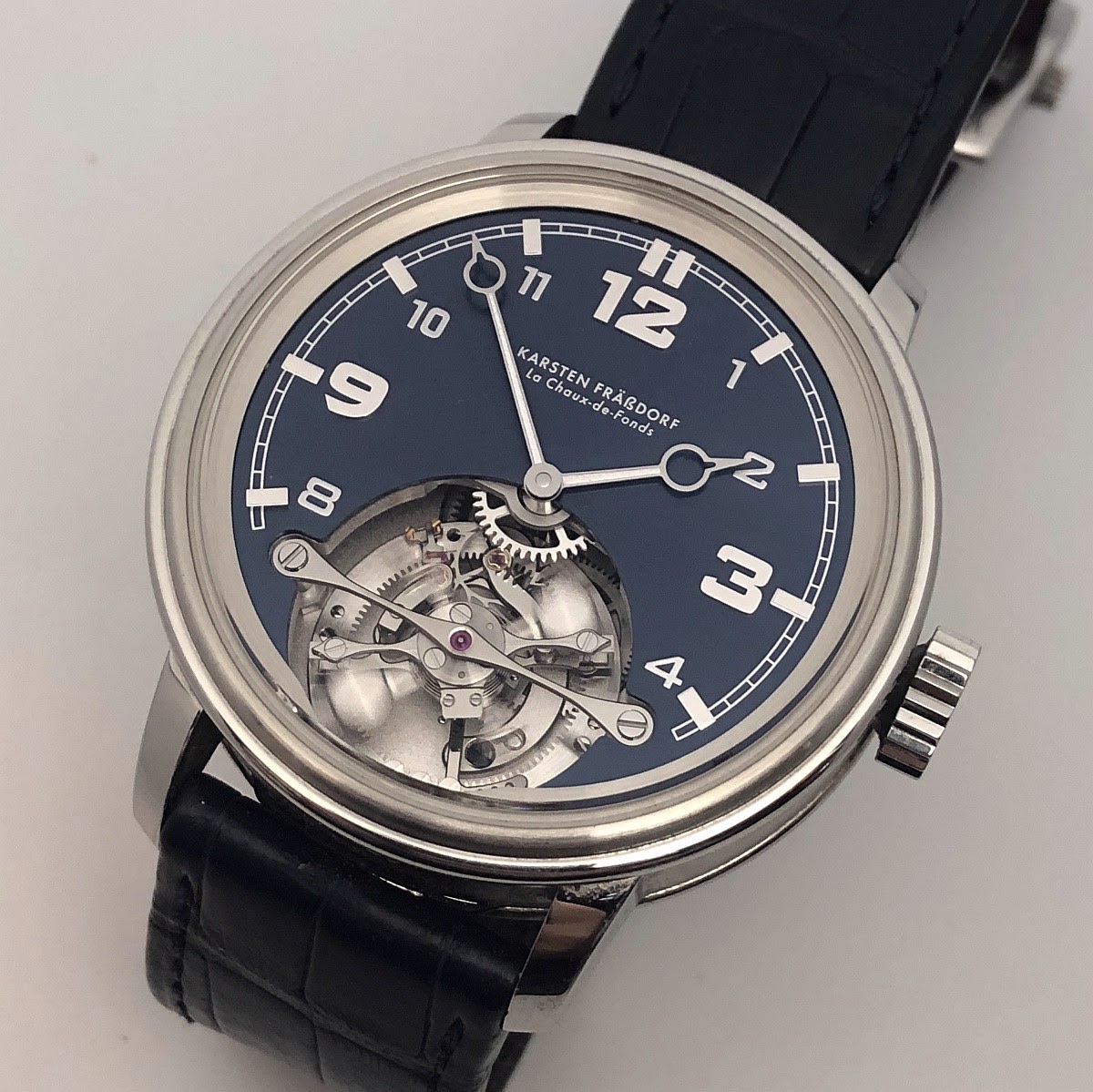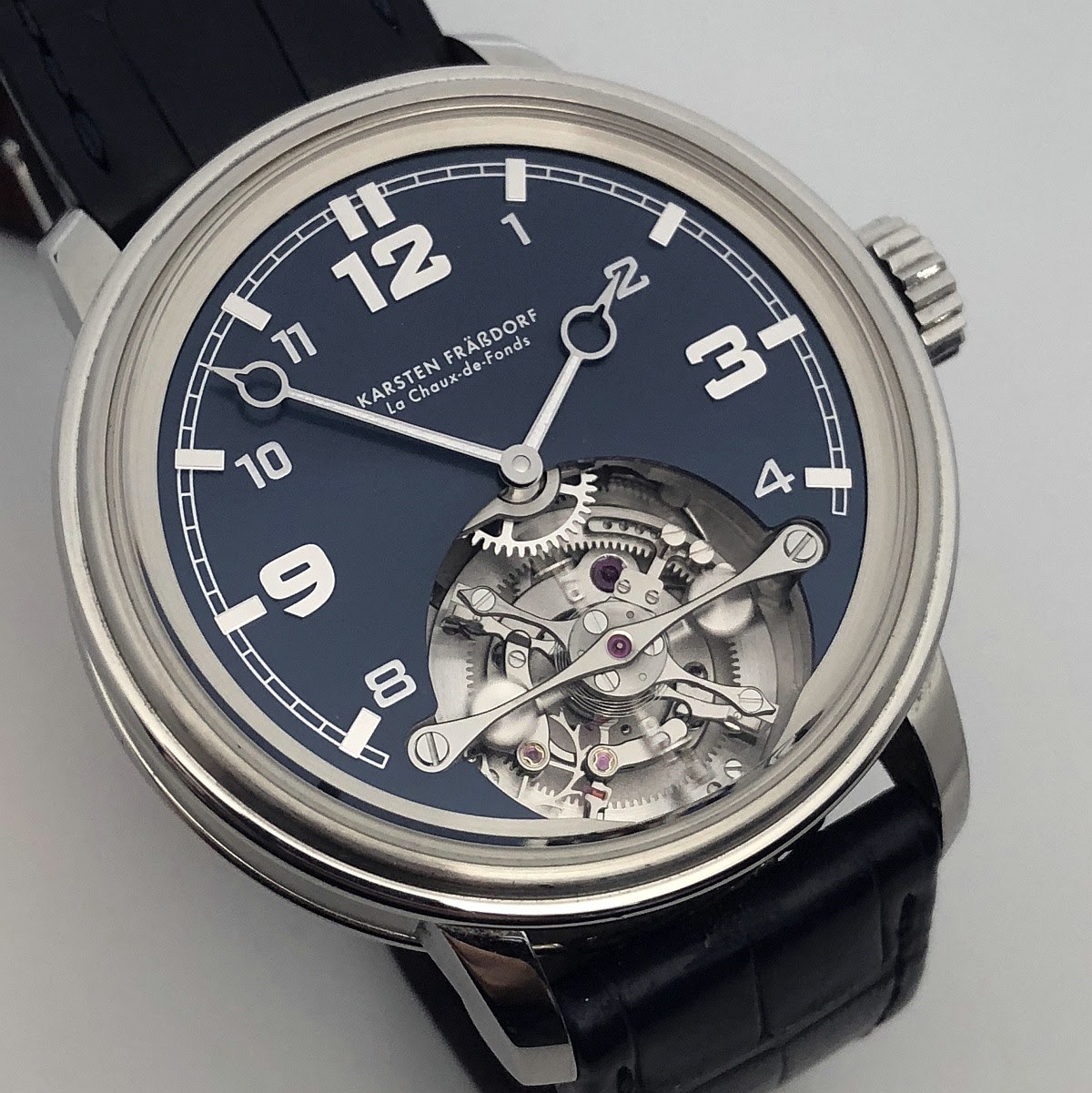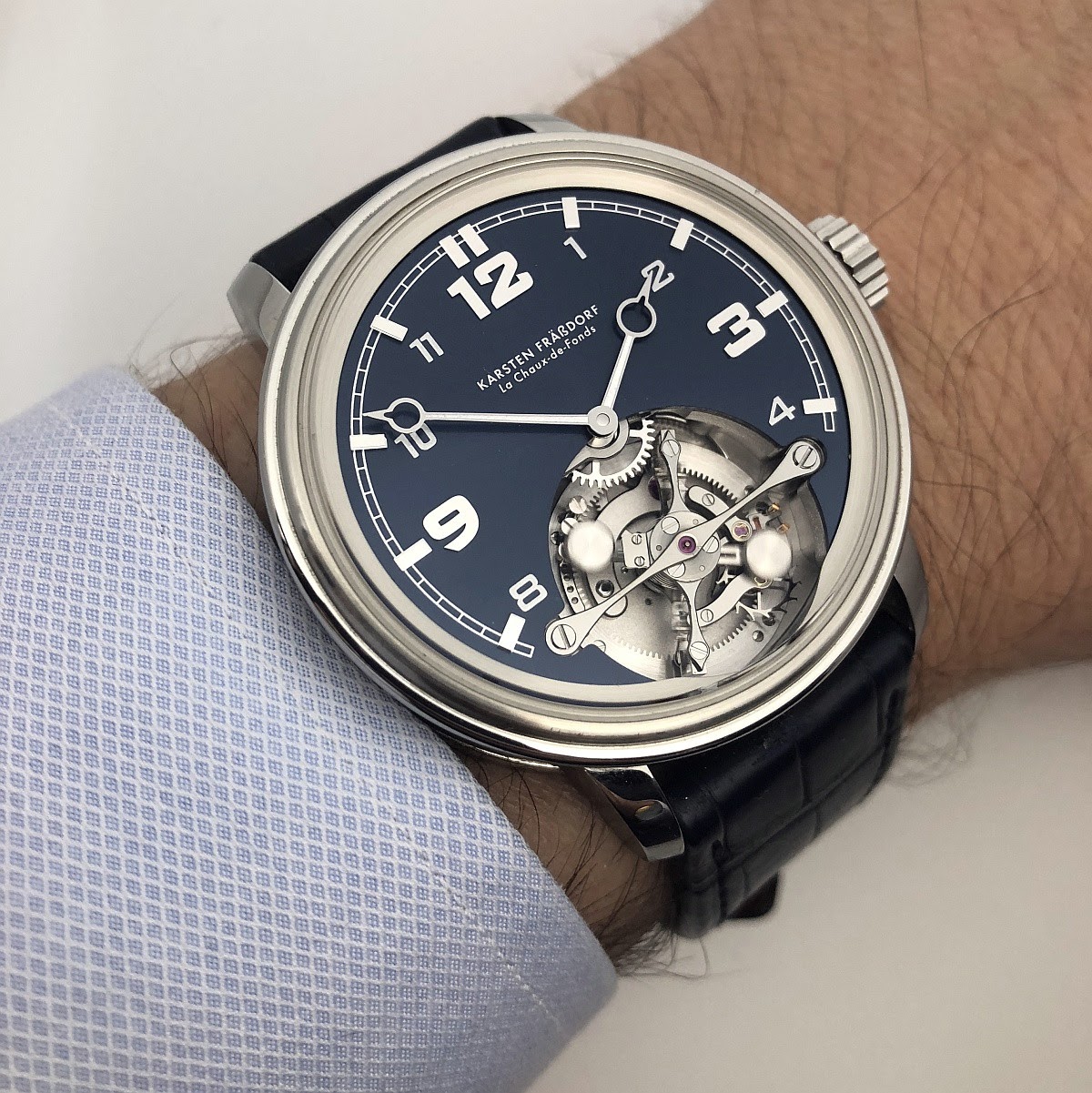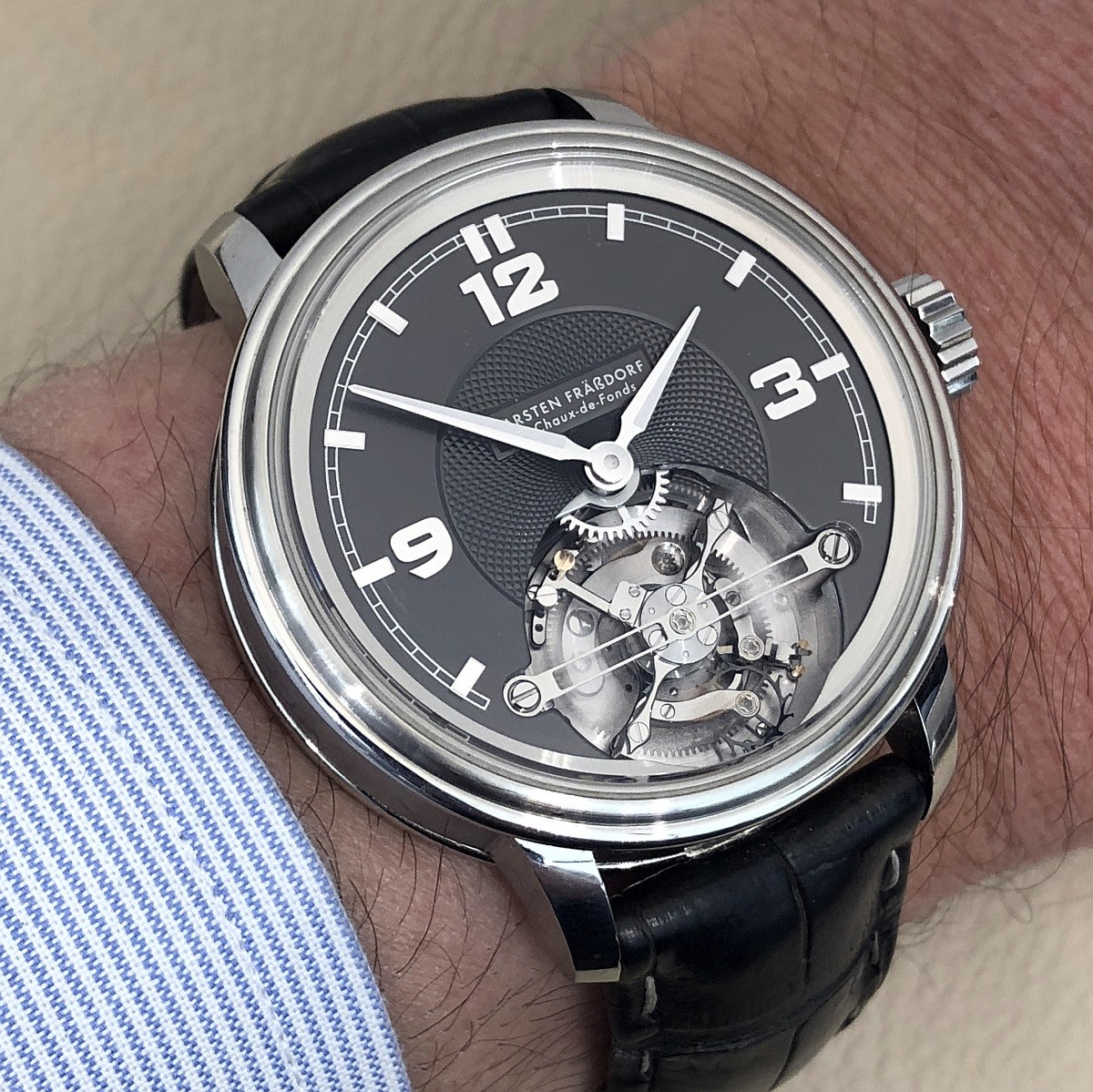
foversta
[PuristSPro Moderator]
20814

Hands on review of Karsten Frässdorf's Spirograph Tourbillon
I have known Karsten Frässdorf for many years, in fact since the adventure of the Fabrication des Montres Normandes (FDMN) whose first steps had been presented at the Salon Belles Montres 2008 in Paris. Time flies! There is no need to beat around the bush at this point: I know that the name of Karsten Frässdorf is associated with brands (FDMN, Heritage Watch Company) or projects (Sauterelle de Chronoswiss) that have disappeared prematurely, even before any chance to see the watches on the shelves. All of this makes Karsten Frässdorf's watches generate a lot of frustration among fans and collectors. They were very beautiful prototypes but they remained somehow virtual because apart from any sales process and therefore accessibility. The frustration was all the greater as these watches were very desirable.

In this context, I was very happy to see Karsten Frässdorf a few months ago to present me his new project, which is being put into practice this time. My purpose is not to judge what happened during his previous projects. It is not my role. I am delighted to see that Karsten Frässdorf can once again express himself and highlight his vision of watchmaking. And this time, in a new context with a brand that bears his name.

The large opening of the dial reveals the main point of attraction of the Spirograph Tourbillon: the unique behavior of the balance wheel. This behavior is indeed unusual. Firstly because of the shape of the balance wheel and the removal of the rim. The low frequency (2,5hz) makes it possible to better appreciate this removal and the oscillation becomes perceptible while following the two weights. And then there's the tourbillon cage that makes a full revolution in one minute. This tourbillon is fascinating. It is both discreet because the balance wheel by itself captures the attention but also very present because, and this is great news, the escapement is very visible. It is then enough to focus on this escapement to appreciate the permanent revolution of the regulating organ.
The theoretical power reserve of the watch is 70 hours. But to achieve optimal behavior and isochronism, Karsten Frässdorf voluntarily limited it to 44 hours thanks to a Maltese cross. However, just turn the crown slightly to make the movement resume when it is stopped.

The vocation of the Spirograph Tourbillon is not only chronometric. Its ambition is to accompany his owner in all circumstances. This is why the movement lay-out offers shock protection up to 5000 G and 1000 Gauss anti-magnetic resistance. Note however that the water resistance is only 30 meters.
Once this frame is defined, many customizations are available. The dial can feature sunrays or guillochage, the hands, with various shapes can be full or hollowed, the colors can evolve and even the bridge of the tourbillon can be changed. That said, among the existing models, it's the Spirograph Tourbillon Soleil Bleu that really seduced me because of the beautiful reflections of the dial and the shades of light brought by the applied numerals and indexes. Other versions have a more sporty style that also suits the spirit of the watch and its resistance.

When I put the Spirograph Tourbillon on the wrist, the magic worked in an instant. My eyes were instantly attracted by the opening and it was at this precise moment that I fully appreciated the low frequency: the sound of the movement, the ballet of the regulating organ create a captivating show that almost makes us forget everything else. And it's this show that made me love this watch. The tourbillon and the regulating organ thus manage to justify the size of the case (which finally has a smaller perceived diameter) and even the fact that the peripheral scale is cut off! This detail, which may seem surprising for a chronometer watch is fortunately swept away by the visual rendering of the tourbillon. The end justifies the means in some way.

The Spirograph Tourbillon is available directly from Karsten Frässdorf for a price around 85K CHF for a watch with the Soleil Bleu dial. The price will be modified according to the requested customizations.
For those who want to know more and discover in the metal the Spirograph Tourbillon, Karsten Frassdörf will be present at the next edition of Baselworld in the Watch Incubator area located in the mezzanine of Hall 1.0.
Pros:
+ the charm of low frequency
+ a mesmerizing tourbillon
+ the presentation of the dial, sober and very well executed
+ a balanced watch despite its size
Cons:
- the peripheral scale is cut off what is a bit problematic for a chronometric watch

Hands on review of Karsten Frässdorf's Spirograph Tourbillon

Thanks for sharing FX!
Always liked his work



